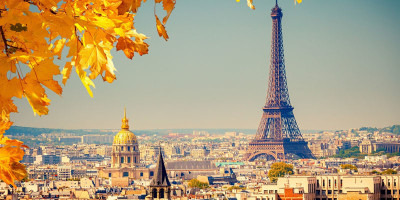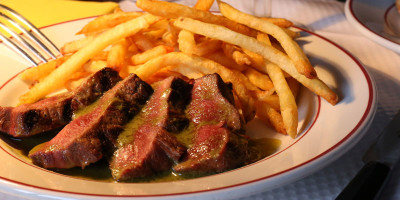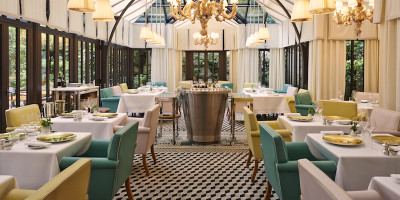
The Royal Museums of Fine Arts of Belgium. Photo by Suicasmo. Wikimedia Commons.
Top 10 Amazing Facts about Royal Museums of Fine Arts of Belgium
The Royal Museums of Fine Arts of Belgium are a group of art museums in Brussels, Belgium. They include six museums: the Oldmasters Museum, the Magritte Museum, the Fin-de-Siècle Museum, the Modern Museum, the Antoine Wiertz Museum and the Constantin Meunier Museum.
The Royal Museums contains over 20,000 drawings, sculptures, and paintings, covering a period extending from the early 15th century to the present, such as those of Flemish old masters like Bruegel, Rogier van der Weyden, Robert Campin, Anthony van Dyck, Jacob Jordaens, and Peter Paul Rubens, making it the most popular art institution and most visited museum complex in Belgium.
The Magritte Museum houses the world’s largest collection of the works of the surrealist René Magritte. Let’s look at the Top 10 Amazing Facts about Royal Museums of Fine Arts of Belgium.
1.The museum was founded by Napoleon

Photo by Michel Wal. Wikimedia Commons.
The museum was founded in 1801 by Napoleon and opened in 1803 as the Museum of Fine Arts of Brussels, occupying fourteen rooms of the former Palace of Charles of Lorraine, known as the “Old Court”.
The first collection, the core of the current collections of Ancient Art, consisted of a selection of “old deposits”, works of art seized by the French Republic but abandoned (1798), increased by two shipments from Paris (1802 and 1811), and returned works taken away by the Republic (1815).
2. The museums are six in number
There are six museums connected with the Royal Museums of Fine Arts of Belgium; two of them are located in the main building—the Oldmasters Museum or Museum of Ancient Art—whose collections cover European art until 1750, and the Museum of Modern Art.
These museums are situated in the downtown Royal Quarter, on the Coudenberg, in Brussels. The Magritte Museum, opened in 2009, and Fin-de-Siècle Museum, opened in 2013, are adjacent to the main building. The smaller Constantin Meunier Museum and the Antoine Wiertz Museum, dedicated to these two Belgian artists, are located a few kilometers from the city centre.
3. Magritte museum has paintings done by Rene Magritte
The Magritte Museum has one of the richest collections of paintings by the Belgian surrealist artist René Magritte, including some 200 original paintings, drawings and sculptures, such as The Return, Scheherazade and The Empire of Light.
The collection is the result of astute purchases and generous donations, mostly coming from the collection of the artist’s widow, Georgette Magritte, and from Irene Hamoir Scutenaire, who was his primary collector. Inaugurated on 20 May 2009, the museum opened on 2 June 2009. It is housed in the Hôtel du Lotto, on the Place Royale, a stone’s throw away from the Oldmasters Museum.
4. Oldmasters museum has European sculptures, paintings and drawings
The Oldmasters Museum has an extensive collection of European paintings, sculptures and drawings from the 15th to the 18th centuries. The bulk of the collection is formed around Flemish painting, presented in chronological order.
For example, there are valuable panels by the Flemish Primitives (including Bruegel, Rogier van der Weyden, Robert Campin (the Master of Flémalle), Hieronymus Bosch, Anthony van Dyck, and Jacob Jordaens).
5. Fin-de-Siècle Museum was inaugurated in 2013

Photo by Michel Wal. Wikimedia Commons.
Inaugurated on 6 December 2013, the Fin-de-Siècle Museum presents collections of works of art from the end of the 19th and the beginning of the 20th century, when Brussels was a unique artistic crossroads and the capital of Art Nouveau.
Artists represented in the museum’s collection include Constantin Meunier, James Ensor, Henri Evenepoel, Fernand Khnopff, Leon Spilliaert, Jusepe de Ribera, Jacques-Louis David and George Minne. The museum is housed in the Hôtel des Brasseurs or Hôtel Gresham, right next to the Oldmasters Museum, also on the Place Royale.
6. Wiertz Museum has the works of Antoine Wiertz
The life and work of Antoine Wiertz are honoured in the heart of the Leopold Quarter, near Brussels-Luxembourg railway station. This unique museum offers a striking view of the monumental paintings, statues and sketches marked by the Belgian romantic movement.
The construction of this workshop-museum was agreed in 1850 between Wiertz and the Belgian Government. During the year following the artist’s death, the entire collection of works then in his studio was bequeathed to the Belgian State. Since 1868, the Wiertz Museum has been part of the Royal Museums of Fine Arts of Belgium.
7. Meunier Museum as the name suggests has works of Meunier

Massacre of the Innocents. Photo by Workshop of Peter Paul. Wikimedia Commons.
Located in Constantin Meunier’s former house and workshop, the Meunier Museum houses 150 works and documents by the realist painter and sculptor.
Meunier had this beautiful house-studio built towards the end of his life. The house was acquired by the Belgian State in 1936 and opened to the public in 1939. Since 1986, it has been attached to the Royal Museums of Fine Arts of Belgium, and subsequently renovated.
8. It is the most popular art institution in Belgium
For many years now, the Royal Museums of Fine Arts of Belgium has been the most popular art institution in Belgium. The museums had a total of approximately 715,000 visitors in 2010.
This puts the museum in the top 100 most visited museums in the world and makes it the most visited museum complex in Belgium. Thanks to the opening of the Magritte Museum, the number of unique visitors has remarkably increased since 2009. In 2015, the Museum had its best attended year so far with a total of 767,355 visitors.
9. It was ceded to Belgium state in 1841
Following Belgian Independence, the museum, which had belonged to the City of Brussels since 1811, was ceded to the Belgian State in 1841. The transfer of the Contemporary Art collection from the Ministry of the Interior in 1834 is at the origin of the Modern Art section.
In 1845, it was decided, by royal decree, that the museum was to receive works of art of deceased and living Belgian artists. A national commission was established to select important works of art.
10. Previously, exhibitions were done in Charles Alexander’s apartments

Photo by Alta Falisa. Wikimedia Commons.
Until 1878, the Brussels Salon, a periodic exhibition of work by living artists, took place in the former apartments of Charles Alexander of Lorraine. This situation was not ideal because the permanent collection had to be temporarily stored or covered during the exhibition.
In 1851, the exhibition was held in a temporary construction in the courtyard, before returning to its traditional location until 1881, when the first rooms of the new Museum of Fine Arts could be used. This museum remained the location for all subsequent editions.

 English
English











